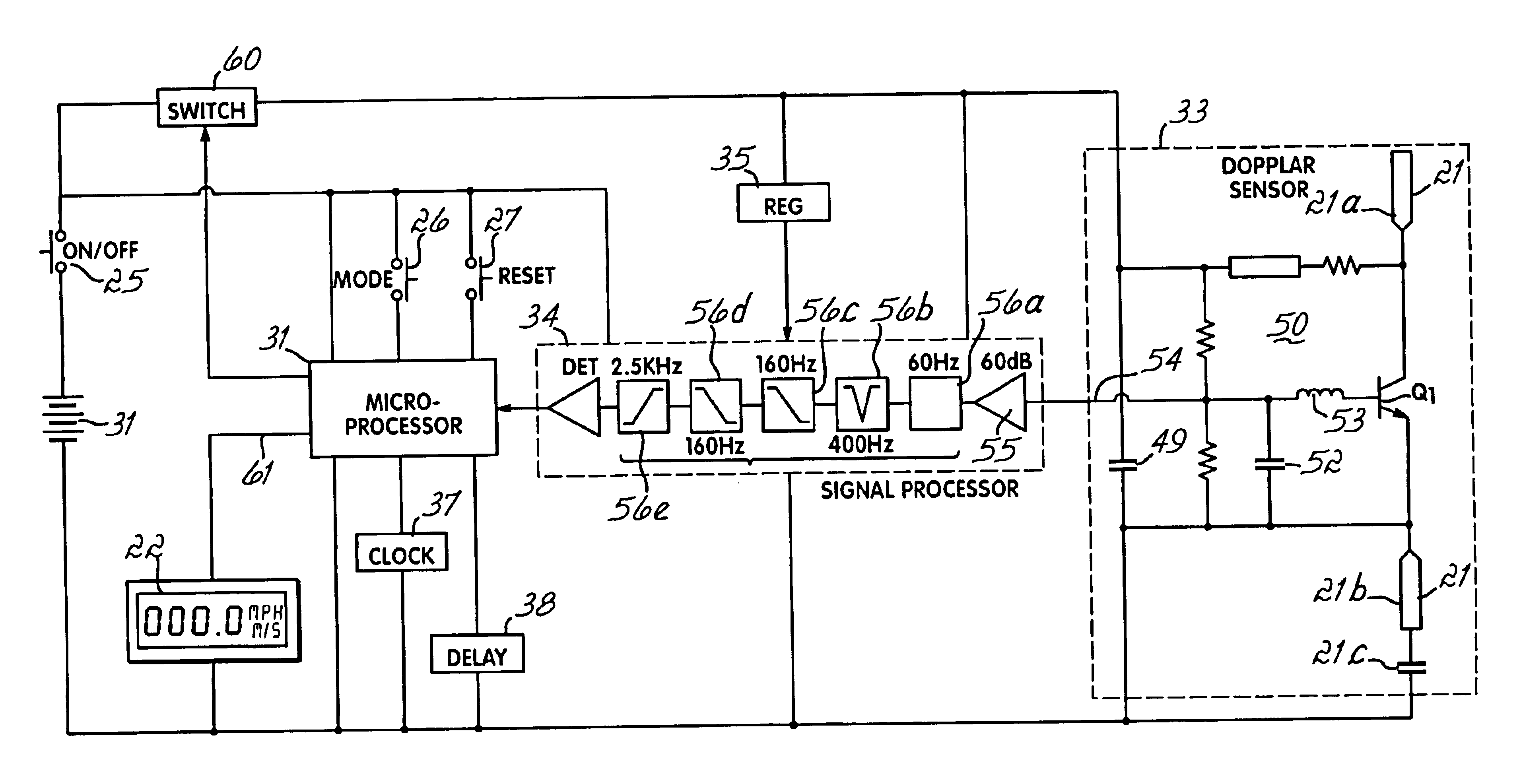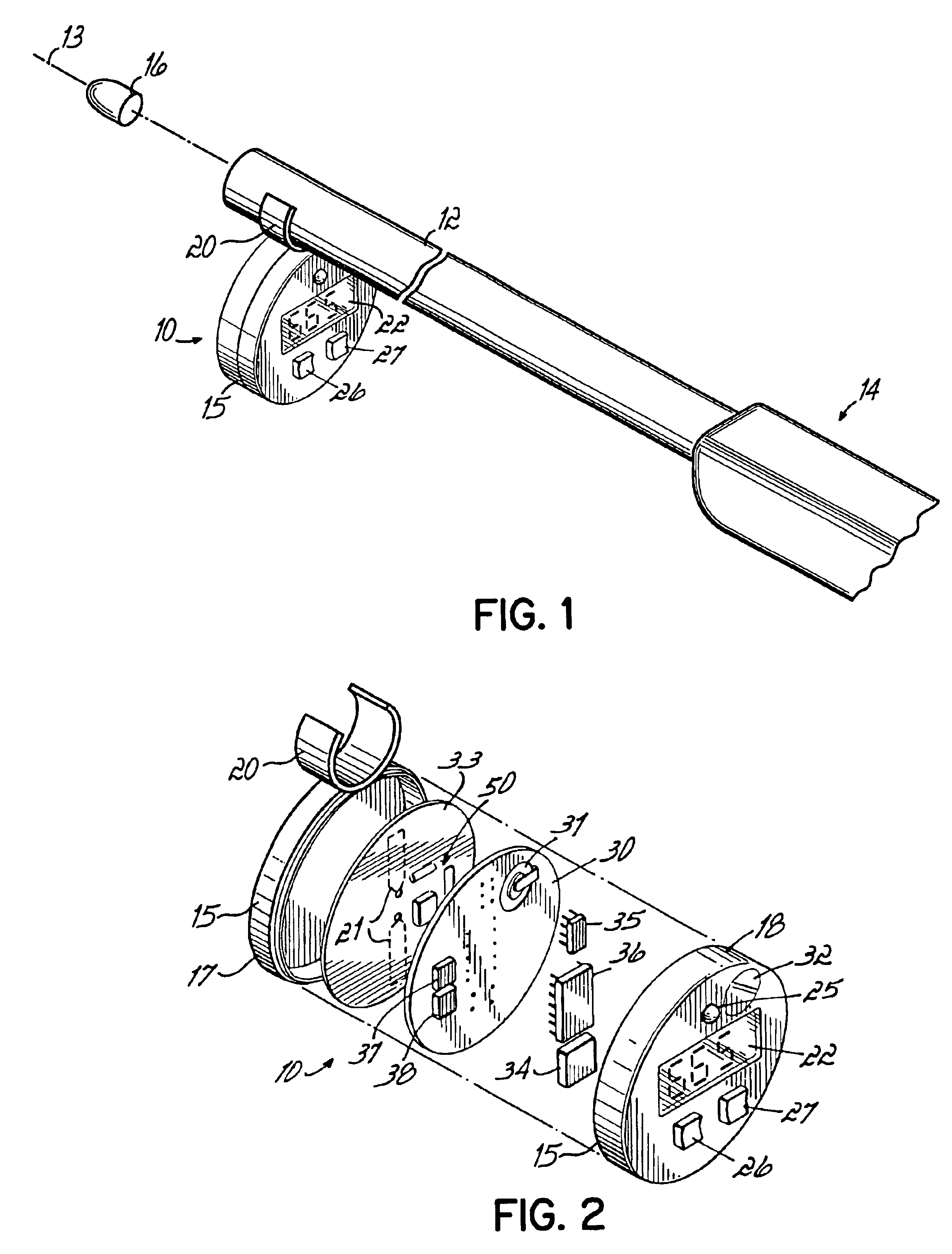Miniature sports radar speed measuring device
a speed measuring device and miniature technology, applied in the direction of reradiation, gymnastics exercise, instruments, etc., can solve the problems of system costing several hundred dollars, user disadvantages, and device design or complexity, and achieve the effect of eliminating erroneous readings and optimizing the trajectory of markers
- Summary
- Abstract
- Description
- Claims
- Application Information
AI Technical Summary
Benefits of technology
Problems solved by technology
Method used
Image
Examples
Embodiment Construction
[0042]FIG. 1 illustrates one embodiment of a speed measuring device or unit 10, according to principles of the present invention, secured to the barrel 12 of a rifle or other firearm 14. The firearm 14 is illustrated immediately after having fired a bullet 16 from its barrel 12. The path of the bullet 16 is illustrated by line 13. The device 10, so secured to the barrel 12, is located within a few inches of the direct path 18 of movement of the bullet 16 being fired from the gun 14. The device 10, in the illustrated embodiment, has a two part plastic housing 15 that includes a forward facing housing 17 and a rearward facing housing 18, as illustrated in FIG. 2. In the illustrated embodiment of the unit 10, the two parts of the housing 17,18 are secured together to form a single enclosure that contains the electronics of the unit 10. The forward facing housing 17 is secured by a fastening element or bracket 20, for example, configured or configurable to attach to the barrel 12 of the...
PUM
 Login to View More
Login to View More Abstract
Description
Claims
Application Information
 Login to View More
Login to View More - R&D
- Intellectual Property
- Life Sciences
- Materials
- Tech Scout
- Unparalleled Data Quality
- Higher Quality Content
- 60% Fewer Hallucinations
Browse by: Latest US Patents, China's latest patents, Technical Efficacy Thesaurus, Application Domain, Technology Topic, Popular Technical Reports.
© 2025 PatSnap. All rights reserved.Legal|Privacy policy|Modern Slavery Act Transparency Statement|Sitemap|About US| Contact US: help@patsnap.com



